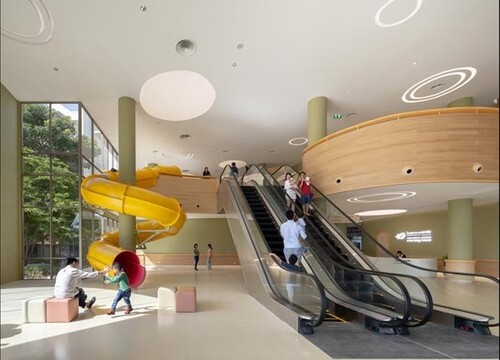*Editor’s note: The number of global Hallyu (Korean Wave) fans is approaching approximately 225 million, according to the 2024 report by the Korea Foundation. The surge in fans marks the dawn of the "Digital Silk Road" era, where communication transcends the limitations of time and space, enabling real-time interaction across the globe. Truly, we are in the era of "Hallyu 4.0."
Suk Soo-sun's Design Management Story: Design Strategy in the Age of AI (1)
Contributed by Suk Soo-sun (professor at Yonsei Graduate School of Communication & Arts)

The concept of design varies depending on the user and the intended audience, as well as the context in which it is applied. Over time, the idea of design has continually expanded, evolving alongside societal changes.
Historically, design was limited to a visual perception of form. Today, it encompasses a broad spectrum, integrating disciplines such as social science, technology, and humanities.
In recent years, the focus of design has shifted toward intangible values, emphasizing the significance of "service design." Despite its growing relevance, service design remains a relatively nascent field, often reliant on the individual expertise of researchers for project success. Its application and research are further complicated by strong national and cultural characteristics.
Improving services is a complex, long-term challenge that cannot be resolved with short-term, piecemeal enhancements. However, service design is becoming increasingly vital in addressing the issues faced by today’s service industries.
◇ 'Design Seoul': Challenges in Public Service Design
Public service design is an emerging field exploring various possibilities. However, compared to investments in public sector marketing, funding for design remains insufficient. A notable example of public service design efforts was the 2009 "Design Seoul" initiative led by then-Mayor Oh Se-hoon.
At the time, the Seoul Metropolitan Government developed a design policy aimed at improving urban facilities, creating a guideline known as the "Seoul City Design Manual." Mayor Oh envisioned transforming Seoul into a better city through design, aspiring to make it the global capital of design by 2010.
To achieve this, the city established the Culture, Design, and Tourism Headquarters, elevating it to a deputy mayor-level department to prioritize the "Design Seoul" initiative. The mere attempt to incorporate design into public administration marked a significant milestone, regardless of its outcomes.
In the healthcare and medical sectors, design investment often takes a backseat due to funding priorities focused on medical demand. However, recent advancements in service design have highlighted its value in areas such as hospital admission processes, treatment procedures, waiting environments, and emergency care settings.
The concept of "redesign" in these contexts aims to improve service delivery, demonstrating the growing importance of service design in enhancing user experiences across various fields.
Oslo University Hospital, Scandinavia’s largest medical facility, embarked on a groundbreaking project to improve breast cancer diagnostic services. This initiative aimed to reduce waiting times and enhance patient experiences, achieving a remarkable 90% reduction in diagnosis wait times from 12 weeks to just 7 days.
 |
| ▲ Promotional image for the EKH Children's Hospital in Thailand, designed under the concept "Children's Dimension: Play Is Healing." The design reflects the belief that the source of children's happiness lies in the joy of play. Each waiting area is creatively designed as a playground to enhance comfort and healing for young patients. (Image Source: ArchDaily) |
By designing an ideal patient experience and reconfiguring backstage operations, the project not only expedited diagnoses but also improved treatment effectiveness and patient satisfaction. Introduced in January 2015, the project became a turning point in Norway’s standardized procedures for breast cancer and mental health treatment, serving as a model for healthcare institutions and positively influencing the national public healthcare system.
Strengthening service design in public sectors, such as healthcare and public architecture, provides significant benefits. It ensures user-friendly environments for vulnerable groups, such as pedestrians with limited mobility, children, and non-native speakers, through universally accessible design.
However, implementing service design in public sectors faces numerous challenges, including lengthy budgeting processes and the need to account for diverse factors. AI (Artificial Intelligence) emerges as a transformative solution, streamlining design processes and overcoming many of these obstacles.
1. Accelerating Data Collection and Analysis
AI allows for real-time data collection and analysis, identifying the specific needs and behaviors of public facility users. Automating traditional survey and interview methods significantly reduces preparation time, enabling rapid development of designs tailored to diverse linguistic and cultural requirements.
2. Reducing Prototype Development Time
AI automates tasks such as 3D modeling of buildings, interface simulation, and user movement scenario planning. By shortening manual design creation times, AI accelerates the testing and revision process, allowing real-time feedback to produce optimal results more quickly.
3. Optimizing User Experience (UX)
AI effectively simulates and predicts behavioral patterns for various user groups, including those with mobility challenges, children, and non-native speakers. Repeated digital UX tests minimize the need for physical testing, enabling the creation of universally accessible designs that transcend language and ability barriers.
4. Enhancing Cost Efficiency and Streamlining Collaboration
AI aids in budget management, scheduling, and team collaboration, simplifying the often-complex public budget approval processes. Pre-reviewing design and budget data with AI yields compelling materials for decision-makers, expediting the approval and implementation of design projects.
Integrating AI into public service design reduces administrative complexities and physical testing requirements while rapidly implementing user-centric designs. These advancements maximize convenience and significantly enhance accessibility and satisfaction in public facilities. As the AI era progresses, a well-defined design strategy leveraging these capabilities is essential for optimizing public service design.
(C) Yonhap News Agency. All Rights Reserved























